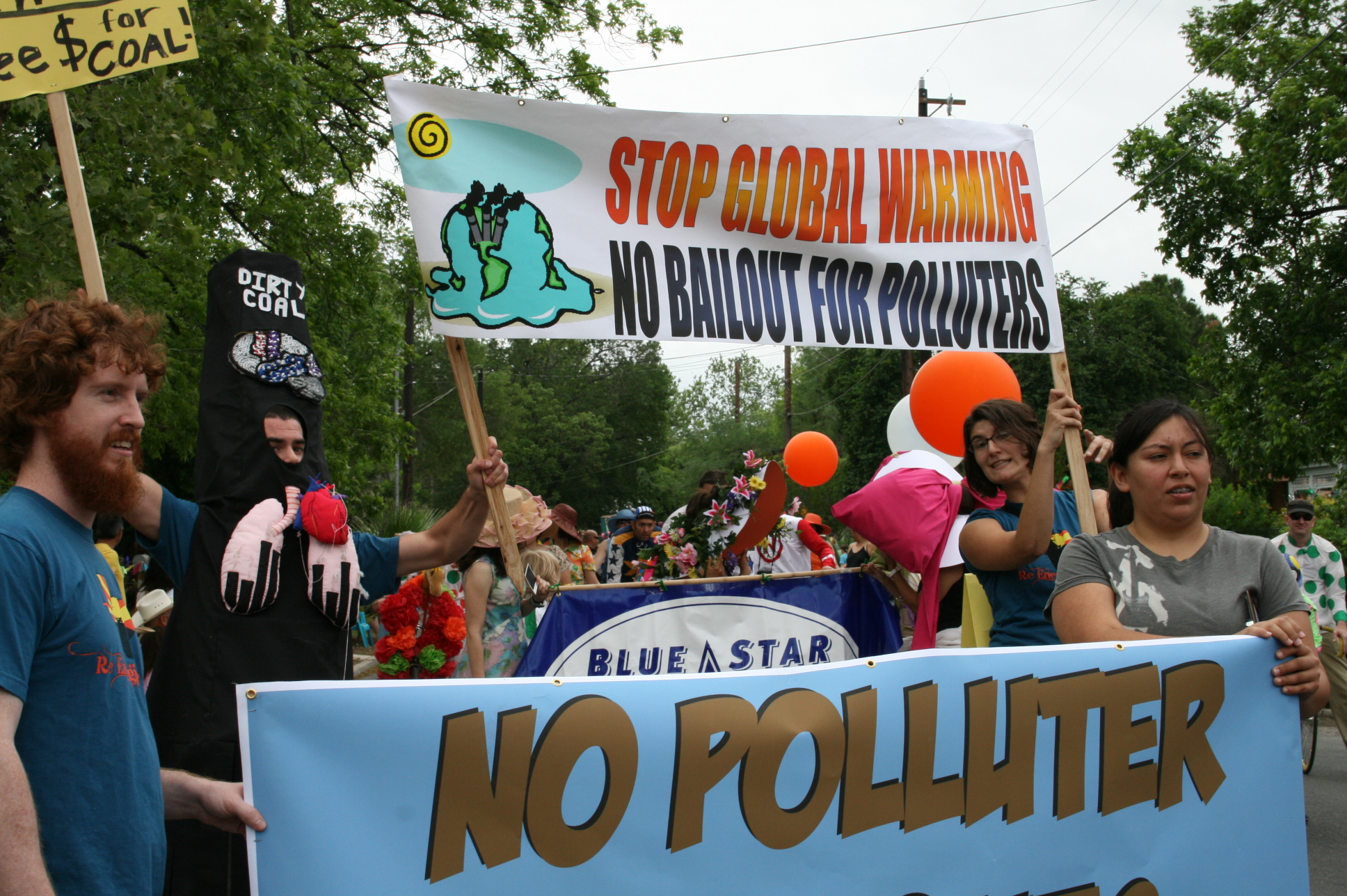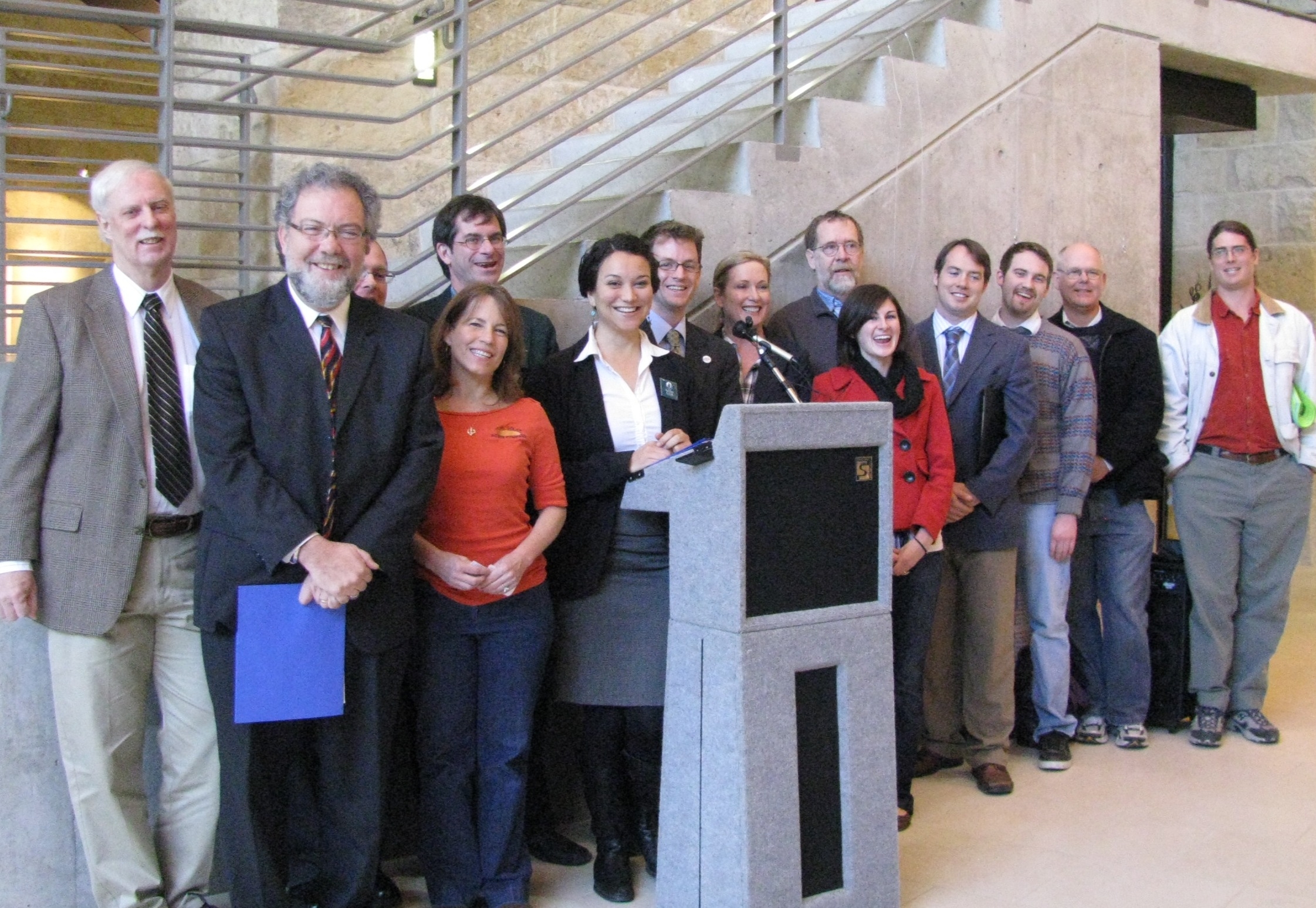EDITOR’S NOTE: At this rate, we may actually finish reviewing the year in blog 2009 by the end of January 2010– just how we wanted to start the year!! But… stuff keeps happening…. and we can’t blog! Or we have to blog about the important, breaking news stuff! So, sorry for dragging this out, but we hope you’re having fun reminiscing as much as we are blogging about it.
5. The Little Climate Bill That Couldn’t
We had high hopes coming into 2009. Congressmen Waxman and Markey were hard at work on draft legislation that they promised would meet scientific standards on climate change. They had even collected signatures from the majority of their caucus on principles that they would build off of. And those principles were pretty good. So was Obama’s proposed budget, which showed they had revenue plans starting in 2012 of a 100% auction of CO2 credits- a 100% auction being the method that most agree brings quicker pollution reductions and is also, according to the EPA, the least regressive method of implementation. Hey, anything that hurts poor people the least is what we want to do, right?
WRONG. Clearly, you think differently than the majority of the US Congress.
Then Waxman and Markey released their draft legislation – our reaction was not pretty. Texas Congressmen had been complicit in weakening the bill away from the standards of the original principles.
Good Points:
- AMAZING building code and appliance standards for energy efficiency
- Good long term (2050) and short term (2020) goal for carbon reduction (still needed to be improved to what science calls for- but a good start)
- Had a renewable energy mandate and an efficiency mandate: we’d get 20% of our power from renewables by 2020 and increase energy efficiency by an additional 10%.
Bad points
- Well… all of those goals could be bigger.
- No language on how the carbon credits would be auctioned or allocated. Nada. Left to be decided later. Like a “scene missing” slide in a Nine Inch Nails video that gets crazier and scarier as time goes on….
And then the hearings on the bill started. In typical fashion, climate denier troglodytes like Texas’ own Joe Barton tried to slow down the proceedings– by insisting that the entire bill and its amendments be read aloud before the committee. Because of this unprecedented demand, the House Energy and Commerce Committee simply hired a speedreader.
[youtube=http://www.youtube.com/watch?v=j_SB7g_Yb-0]
If only that had been the extent of the funny business with the bill… but both behind closed doors and by amendment in the committee, the climate bill got gutted. First, special giveaways to the nuclear industry. Then to the coal industry. Then decreasing the renewables and efficiency goals by almost half. Then offsets language that guaranteed that polluters would be able to continue to pollute above the cap– meaning in a bill whose primary purpose is to make sure we curb pollution so we don’t fry the planet, our emissions might actually GO UP, not down. And the bill passed the House Energy and Commerce Committee, its largest hurdle, but by then it had been incredibly compromised. Our immediate reaction was: follow the money (ad this remains the single best explanation of what happened to the climate bill to date, imho– it also helps that I wrote it).
But they weren’t done with the gutting of the bill yet…
Then special giveaways to the agribusiness industry. And finally, the coup de grace, they stripped the EPA of their authority to regulate greenhouse gases through the Clean Air Act.
During all of this, we were trying our best to stand up for ordinary Texans against these corporate interests– you may have seen us at the King William Parade in San Antonio, telling San Antonio’s Congressman Gonzalez, “Sorry Charlie, Bailouts Aren’t Green.” I think aside from crashing the Energy Citizens Rally this was the most fun I had all year.

We were, to say the least, conflicted. We REALLY REALLY REALLY wanted a climate bill. But what we got was a climate disaster. The Waxman-Markey Bill, co-authored by your special interest friends, passed on June 28. Ugh. It’s like sending out a birth announcement of a really, really ugly baby. Or opening a beautifully wrapped present you thought was the perfect gift but finding instead the world’s ugliest Christmas sweater. Disappointment? That’s not strong enough. To use the parlance of our day: #EPIC FAIL.
The Senate side hasn’t fared much better. Despite a decent framework from Senators Kerry and Boxer (it really needs to be improved, but it could be worse) passing through the Senate Environment and Public Works Committee (partisan knuckledraggers, led by Denier-in-Chief James Inhofe, actually boycotted the hearings and the vote), it has yet to be worked on by the Senate Finance Committee (who, you may have heard, was REALLY busy working on some bill having to do with health care. It didn’t get much media coverage, so you may have missed it. </sarcasm>)
Meanwhile, others felt that both the Boxer bill and the Waxman-Markey bill were DOA in the Senate, so a tri-partisan group of Sens. Lindsey Graham (R-SC), John Kerry (D-MA- look! I got my name on TWO climate bills this Congress!), and Joe Lieberman (I-CT) have said they would develop their own climate bill. No word yet on their framework (a draft could come any day now), but, unfortunately signs are pointing to “not good”. It seems the only thing the three of them can really agree on is more pork for nuclear.
However, the EPA in December issued an endangerment finding for greenhouse gases, the next step in actually regulating them, as they were ordered to do in 2007’s Massachusetts v EPA Supreme Court case. So a year that began on a hopeful note went bad, then worse…. but ended with a little ray of sunshine. Here’s to a New Year’s Resolution of ACTUALLY passing a climate and clean energy bill that can ACTUALLY fight climate change and create more clean energy. And just like that New Year’s Res to lose 10 pounds, this year we REALLY mean it!
###
By promoting cleaner energy, cleaner government, cleaner cars, and cleaner air for all Texans, we hope to provide for a healthy place to live and prosper. We are Public Citizen Texas.
Read Full Post »



 Why not take 60 seconds out of your day to save the earth?
Why not take 60 seconds out of your day to save the earth?




 Roger Duncan announced his retirement today. Although it is sad to see a dedicated public servant move on, Public Citizen congratulates him on a fine career as general manager of Austin Energy, a municipal power company.
Roger Duncan announced his retirement today. Although it is sad to see a dedicated public servant move on, Public Citizen congratulates him on a fine career as general manager of Austin Energy, a municipal power company.

